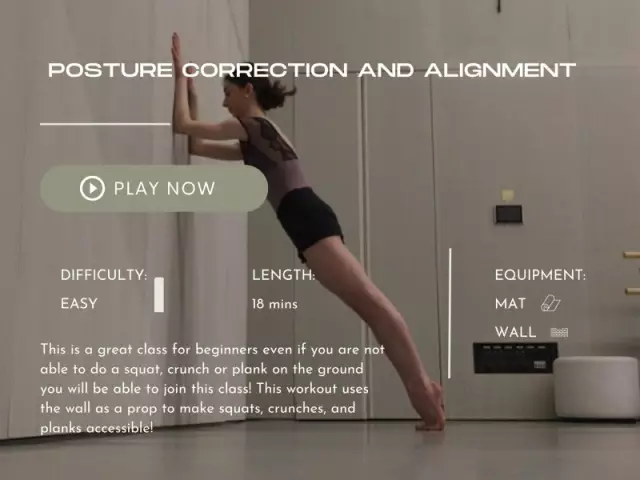- Author Rachel Wainwright [email protected].
- Public 2023-12-15 07:39.
- Last modified 2025-11-02 20:14.
Dislalia

Of all the known speech problems, dyslalia is the most common. Most often it occurs in childhood and consists in various defects in the pronunciation of the sounds of the native language - distortions, replacements, confusions, up to their complete absence in speech. At the same time, there is a fairly widespread opinion that dyslalia in children is a transient phenomenon that passes with age. However, such a speech disorder is also typical for adults. Moreover, in most cases, the main "roots" of the problem should be sought after all in childhood. Subsequently, defective sound reproduction often has an extremely unfavorable effect on the rest of his life.
Dyslalia reasons
All potential causes of dyslalia can be divided into two groups:
- Organic. Violation of pronunciation occurs due to any anomalies in the structure of the articulatory apparatus - teeth, jaws, tongue, palate. It can be both congenital and acquired defects: missing teeth, malocclusion, shortened hyoid ligament, high roof of the palate. Any of these anomalies can lead to speech defects inherent in dyslalia;
- Socio-biological. The child's speech develops by imitation. Many parents do not communicate enough with their baby, do not pay attention to the development of his pronunciation skills. This often becomes the cause of dyslalia, because in such a situation it is difficult to expect a spontaneous appearance of correct speech in a child. A delay in the formation of pronunciation skills inherent in the native language often leads to the development and consolidation of defective sound pronunciation.
Separately, there are age-related causes of dyslalia in preschool children. In this case, the speech defect is a physiological norm and does not require correction. However, in order to exclude the formation of pathological pronunciation skills, it is necessary to carefully consider the development of the speech of young children. It is at the preschool age that the foundations of communicative abilities are laid, which play a crucial role throughout subsequent life.
Dyslalia forms
Depending on the reasons that contribute to the appearance of a speech defect, there can be two main forms of dyslalia: mechanical and functional. The first of them can occur at any age in the presence of organic changes in the speech apparatus. At the same time, in children, pronunciation disorders are more often associated with such a pathology of the tongue as a shortened bridle, or with an incorrect bite, that is, an abnormal position of the jaws in relation to each other. Poor speech in adults can be caused by age-related changes, primarily the absence of teeth.
The functional form of dyslalia has several varieties. This division is due to the selection of the most significant signs of speech impairment, which makes it possible to make speech therapy effects more targeted. In total, there are three forms of functional dyslalia:
- Acoustic-phonemic. This disorder is based on the lack of development of speech hearing, as a result of which there is a mixing of sounds that are similar in acoustic features, for example, voiced-deafness. In some cases, the inadequacy of the perception of sounds by ear leads to their omission in speech;
- Articulatory-phonemic. A similar form of dyslalia arises in the case of insufficient assimilation of the correct positions of the organs of the speech apparatus when pronouncing certain sounds, as a result of which they mix;
- Articulatory-phonetic. This type of dyslalia is characterized by a distorted pronunciation of sounds due to incorrectly mastered articulatory positions.
Complex dyslalia
With dyslalia, pronunciation of a different number of sounds can be impaired. If one of them is reproduced defectively or several belonging to the same group, for example, only sibilants, the defect is considered simple. If the pronunciation of sounds from different groups is impaired, they speak of the presence of complex dyslalia. Most often, it is a consequence of the underdevelopment of phonemic perception, that is, speech hearing.
At the same time, the difficulties of correction are associated not so much with the number of defectively pronounced sounds, but with the need for rather painstaking work to develop their perception by ear. As a rule, it is phonemic problems that become the reason that the elimination of complex dyslalia takes a long time. The age factor is also of great importance.

In adults, pronunciation defectiveness is more often associated with the formation of incorrect articulatory positions, while verbal hearing is usually well developed. Dislalia in children in the overwhelming majority of cases is caused precisely by insufficiently developed phonemic perception, as a result of which the defective pronunciation of many sounds is fixed.
Contrary to popular belief, both simple and complex dyslalia can be eliminated without consequences at almost any age. With its mechanical form, it is required, first of all, to get rid of defects in the articulation apparatus. If it is quite difficult to achieve this, for example, with an incorrect bite, the correction of speech defects, however, is quite affordable. The normalized acoustic effect of sound can be obtained in different ways.
Incorrect pronunciation occurs in people of all ages. In the vast majority of cases, the origins of this problem lie in early childhood. Kids, for quite understandable objective reasons, cannot independently decide how to speak to them throughout their entire subsequent life. In this regard, it is the parents who most often lay the blame for the emergence and consolidation of such a speech disorder as dyslalia in children. But it is quite possible to cope with defects in sound pronunciation, for this it is enough to turn to a speech therapist in time.
YouTube video related to the article:
The information is generalized and provided for informational purposes only. At the first sign of illness, see your doctor. Self-medication is hazardous to health!






